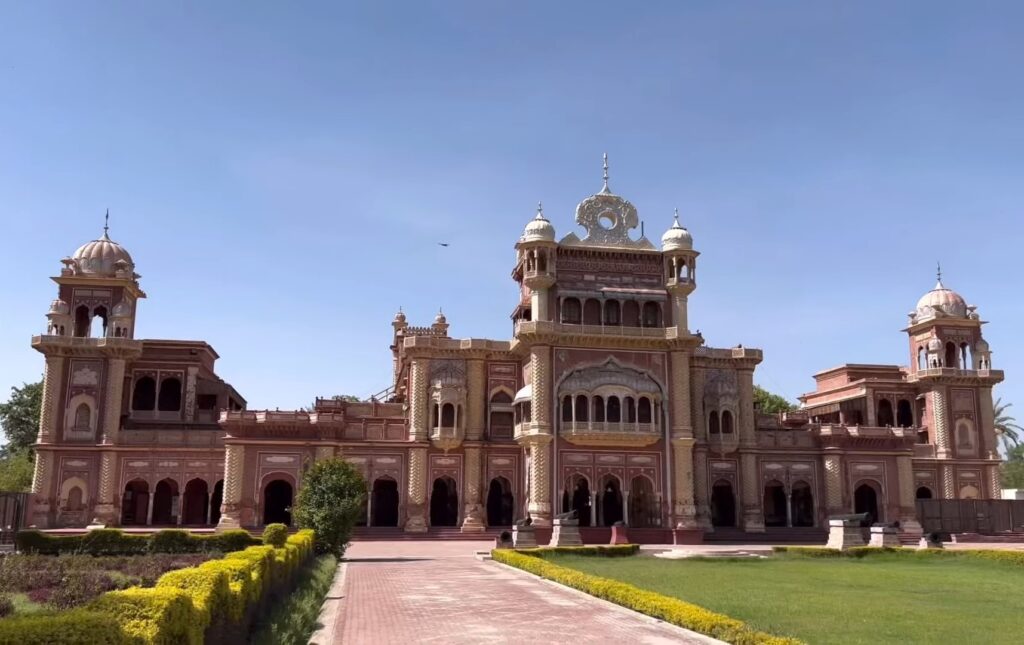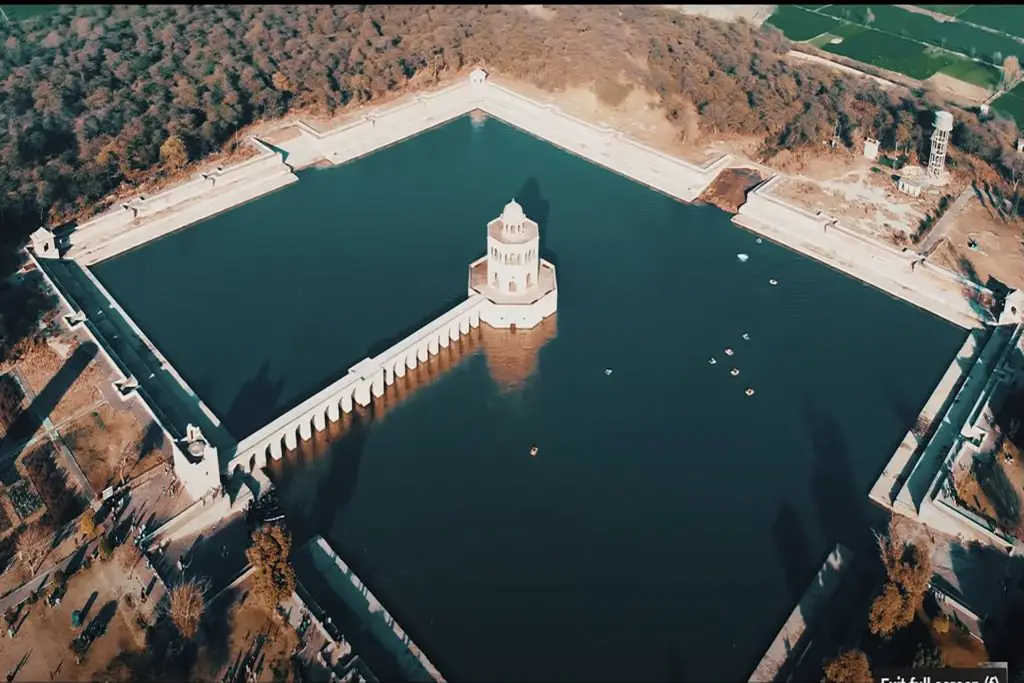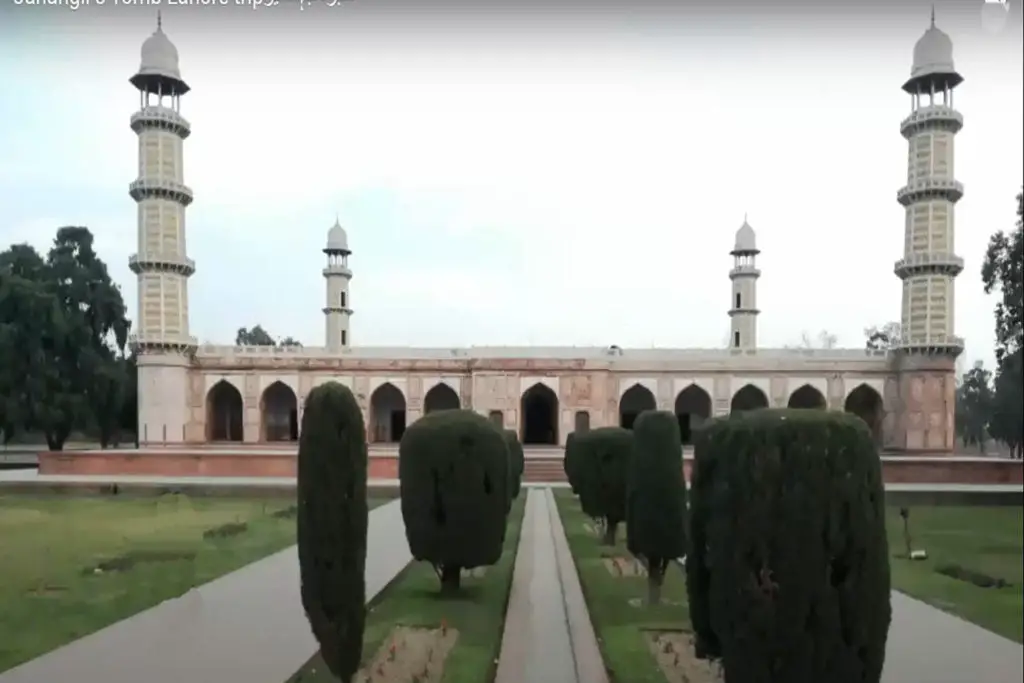Faiz Mahal Khairpur is a magnificent palace located in the city of Khairpur in the Sindh province of Pakistan. The palace was constructed in the late 19th century by Mir Sohrab Khan, who was the ruler of Khairpur state at the time. The palace was named after his son, Faiz Mohammad Khan.
Faiz Mahal Khairpur Location
Faiz Mahal is located in Khairpur, a city in the Sindh province of Pakistan. Specifically, it is situated in the old town of Khairpur, near the Ghari Mori area. The exact address of Faiz Mahal is:
Faiz Mahal, Shahi Bazaar, Near Shahi Masjid, Khairpur, Sindh, Pakistan.
Faiz Mahal Khairpur History
Faiz Mahal is a historic palace located in Khairpur, Sindh, Pakistan. It was built in 1798 by Mir Sohrab Khan, who was the ruler of the Khairpur State at that time. The palace was constructed as a royal residence for the Talpur rulers, who belonged to the Talpur dynasty.
The architecture of Faiz Mahal reflects a blend of different styles, including Mughal, Persian, and European influences. The palace is known for its intricate woodwork, ornate balconies, beautifully carved doors and windows, and decorative frescoes. It features a unique mix of local craftsmanship and artistic elements from different cultures.
Faiz Mahal served as the administrative headquarters of the Khairpur State and also as the residence of the ruling family. The palace witnessed significant events throughout history, including the signing of treaties and meetings with important political figures.
Today, Faiz Mahal is open to the public as a museum. It showcases the rich cultural heritage of the region and exhibits various artifacts, including antique furniture, royal garments, weapons, manuscripts, and artwork. The museum offers visitors a glimpse into the lifestyle and grandeur of the Talpur rulers.
Faiz Mahal is not only a historical landmark but also an architectural marvel that attracts tourists and history enthusiasts from around the world. It stands as a testament to the rich history and cultural heritage of Khairpur.
Image Gallery










Faiz Mahal Architecture
The Faiz Mahal is a beautiful example of colonial-era architecture, blending traditional Mughal and European styles. The palace is adorned with intricate carvings, colorful glasswork, and ornate ceilings. The exterior of the palace is painted in soft shades of pink and white, adding to its aesthetic charm.
The palace has over 70 rooms, including bedrooms, reception rooms, and private quarters. The palace also has a large courtyard with a fountain in the center, which is surrounded by beautiful gardens. The palace’s architecture and interior design are a testament to the artistic and cultural heritage of the region.
Today, the Faiz Mahal is open to the public and serves as a museum showcasing the cultural heritage of the Khairpur region. The palace houses a collection of antique furniture, carpets, and paintings, providing visitors with a glimpse into the lavish lifestyle of the royal family.
Apart from its historical significance, the palace has also gained fame for its association with the famous Sufi poet, Sachal Sarmast. Sachal Sarmast was a renowned poet and philosopher who lived in Khairpur during the 18th century. The palace served as his residence for a brief period, and it is said that he composed some of his famous works within the palace’s premises.
The Faiz Mahal is not just a symbol of architectural beauty and cultural heritage but is also a source of pride for the people of Khairpur. The palace serves as a reminder of the region’s rich history and cultural legacy, and its continued preservation and maintenance ensure that it remains a vital part of the country’s cultural landscape.
In conclusion, the Faiz Mahal in Khairpur is a true gem of colonial-era architecture and cultural heritage. It stands as a testament to the rich history and cultural legacy of the Khairpur region and is a must-visit destination for anyone interested in South Asian history and architecture.







